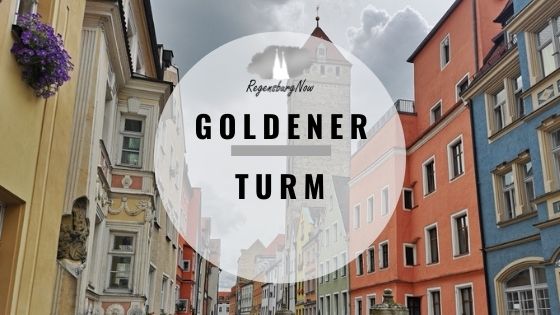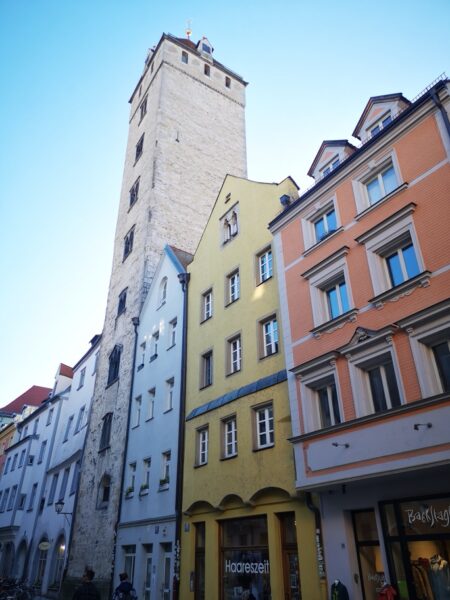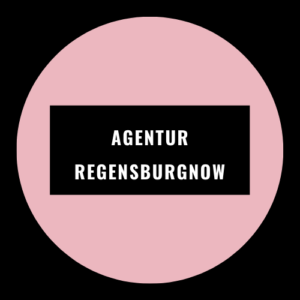
Golden Tower
FROM THE SERIES: REGENSBURG TOWERS!
Regensburg is known for its patrician towers or “Geschlechtertürme”. No city north of the Alps has as many medieval towers as Regensburg. In the Middle Ages, the rich Regensburg patricians copied the towers from their Italian trading colleagues. The towers were stone status symbols of the upper classes, most of whom were merchant families. It is said that the term “stony rich” comes from this period: the more money you had, the higher you could build your tower. Rainer Krämer grew up in Regensburg and loves this city dearly. He has been interested in the history of the city for many years and has published several books about Regensburg. Here he tells us about Regensburg’s highest tower.
THE GOLDEN TOWER IN REGENSBURG:
Candle-straight, proud and also a little defiantly cocky, it has stood for 750 years in Wahlenstraße, which was then still called “Wallerstrazz”. The super-rich long-distance traders Haymo and Waller (which, by the way, is derived from “Welsch” = people from northern Italy / Swiss-French borderland) built their “Protzturm” from 1250, initially with only 5 storeys, and when they wanted to show everyone their enormous wealth once again, they added another 4 storeys on top around 1300. It now stands 50 meters high as a landmark and also as a reminder of the immense economic power of the Regensburg patricians, which ceased in 1400. In total, there were around 60 such towers in the center of Regensburg, 10 of which are still well preserved, e.g. the Baumberg Tower, Löbel Tower, Bräunel Tower, Kastenmayr Tower, etc. Even at that time, it must have been an extraordinary feat of engineering to build such a showpiece tower, which towered over all the other towers in the city (except for the cathedral towers, which were twice as high). As with all major Regensburg buildings around 1200/1300, the privileged Lombard building craftsmen, stonemasons and architects from the region of Como and Lake Como certainly helped. And as with all the other residential castle buildings in Wahlenstrasse and the Bachgassen, the Roman legionary wall running next door also provided the necessary material in the form of hewn and massive ashlar blocks. The “quarry” was therefore right next door. Only on such mighty stone foundations could such tower heights be stably achieved.

The Golden Tower, today Wahlenstraße 16, is part of a high medieval building complex dating from 1100, which opens up again to the west with a wide passageway into Untere Bachgasse 7 at the level of “Orphée”. This patrician tower, visible from afar, was rarely used to safely store the valuable luxury goods that were traded here in Regensburg’s “Fith Avenue” for 250 years. Smoked goods (furs), expensive gold cloth, saffron, theriac, etc., were the coveted goods of the wealthy. In fact, the tower, modeled on the Florentine tower, was only there to show off: …look how rich and powerful we are…
It is no coincidence that the ultra-rich long-distance traders called Reich lived directly opposite in the “Degginger”, another old residential castle. By the standards of the time, Germany’s oldest inner-city trading street was laid out in two lanes, surrounded on both sides by at least five patrician castles. Few Regensburgers will know that a relatively well-preserved massive wooden spiral staircase winds its way up to the 9th floor of the tower. This wooden staircase alone is an architectural masterpiece. Once at the top in the tower room, you will find oil-painted figurative depictions by an unknown Renaissance master on the wood-paneled walls. The paintings on the wooden panels were created around 1600. They mostly show unclothed female and male sculptures standing in painted wall niches. However, a precise interpretation of the depictions is difficult.

However, the artist who painted the facades of the upper storeys of the tower around 1565, e.g. with the coat of arms symbols of friendly Regensburg towns, is well known. Melichor Bocksberger was the name of the highly esteemed “Lüftlmaler”, who also created the first David Goliath fresco around 1570. Until the early 1900s, you could still make out these colorfully painted city coats of arms high up on the Golden Tower. Things were a little more urban at the same time, but 50 m lower down at the weekly pig market. As we all know, everything has its time. And our “Goldener” hides another special feature. From 1530/1540, a number of Regensburg magistrates – led by Johann Hiltner – held conspiratorial meetings in the tower room high above the maze of roofs to prepare for the city’s change of religion to Protestantism. The first public Protestant communion took place on October 15, 1542. This day is regarded as the date on which the Reformation was introduced in Regensburg. The buildings around the tower included the “zum Goldenen Turm” inn until the mid-1600s and a special house chapel, which even made it into the papal chapel register. Today, the profaned chapel cross vault houses the “étagère”, an appealing store for “living like God in France”. The listed building ensemble contains a student residence with 43 beds. Unfortunately, the Golden Tower is not open to the public, but at least we now know a little more about the special features of Regensburg’s “Protzturm” in the “Wallerstrazz”. Enjoy this special medieval skyline “inter Latinos”.
A guest article by Rainer Krämer. Rainer Krämer’s books, such as
1400 Regensburg street names (Softcover / 34,50 € )
Regensburg History 100-1700 Volume 1 (Softcover / 29,50 €)
Regensburg History 1800-2000 Volume 2 (Softcover / 29,50 €)
or The Great Regensburg History Quiz (Softcover / 19,50 €)
are available in bookshops.


(unpaid advertising due to naming and shaming)
Our excursion tips on Facebook:
Do you already know our Facebook group “Excursion tips in and around Regensburg plus Upper Palatinate” with more than 22,000 members? Click here for the group.
RegensburgNow.de has over 40,000 readers per month and is a site of the RegensburgNow agency
If you are interested in advertising on RegensburgNow, please write to us at mail@regensburgnow.de

Don’t miss a thing! Subscribe to our newsletter:
Want more tips? Then please click here:















